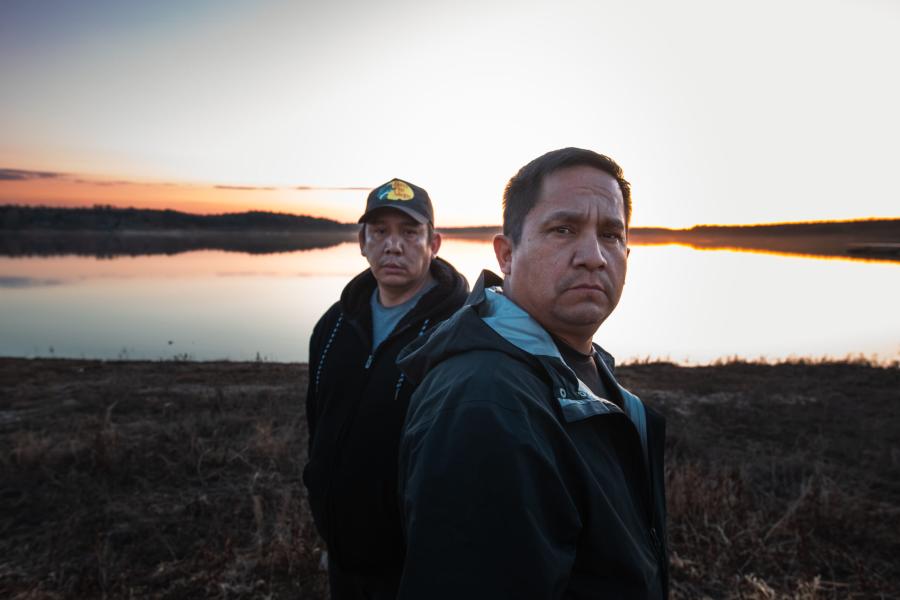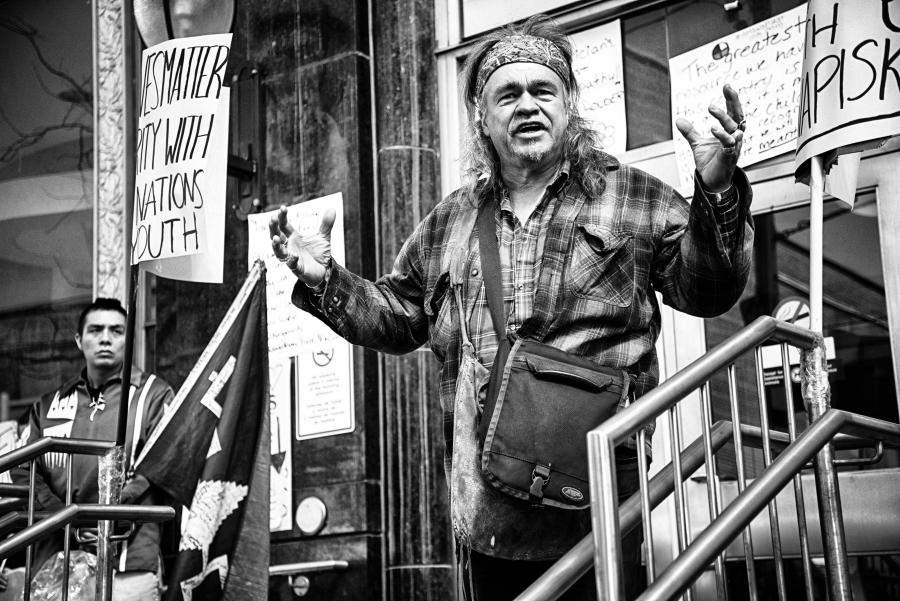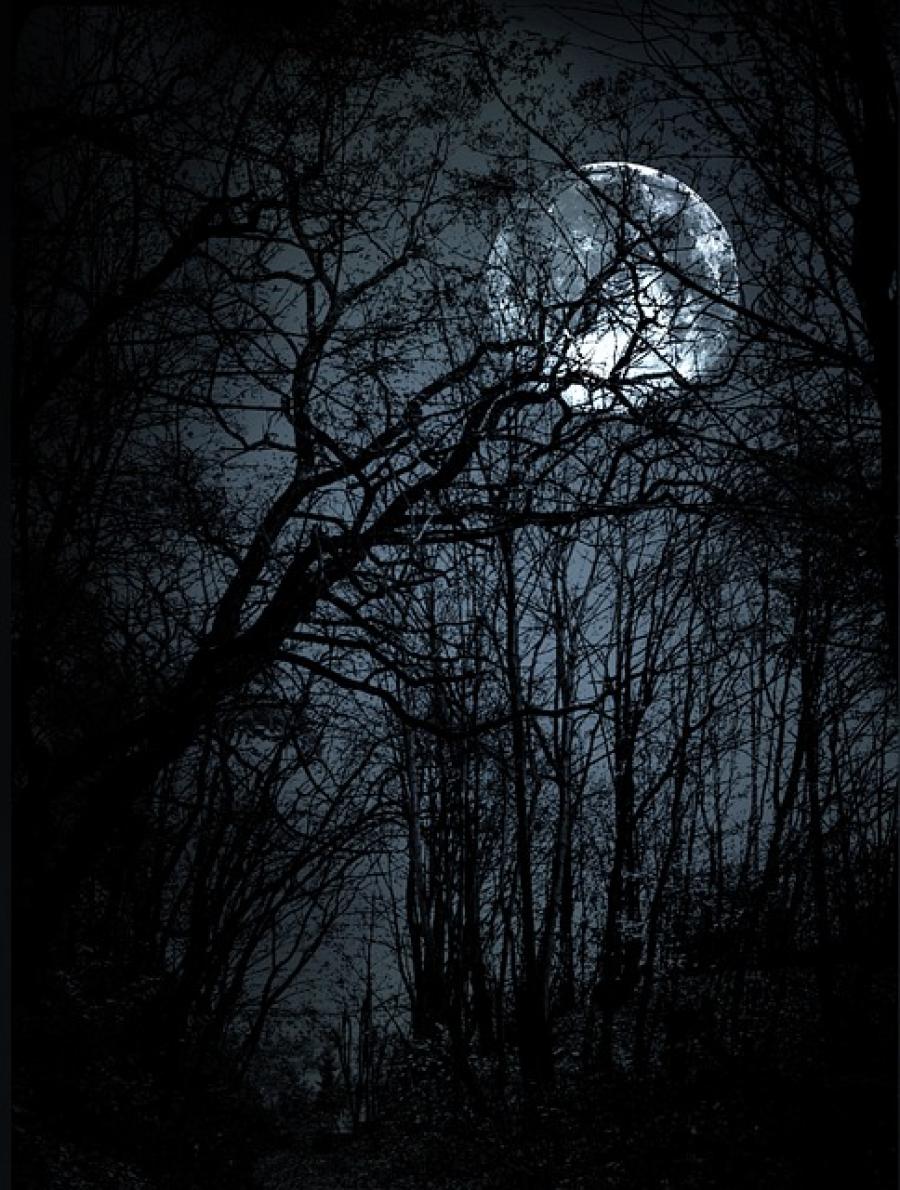Indigenous Issues Dominate Canadian Political Scene
Since June 1990, indigenous issues have dominated Canadian politics as never before. In an incredible series of events, Canadian First Nations have become empowered, leaving both provincial and federal governments looking helpless and inept. Due to the wide scope and accelerating nature of the potent challenge mounted by First Nations over the months, we cannot merely give detailed issues briefs, as is our usual format. Rather, what follows is a chronology of the events that led to more than 30 blockades at roads, bridges, and railway tracks across the country, widespread demonstrations in favor of the resolution of native demands, and an explosive standoff of more than 1,000 Quebec Security Police and army arrayed against the small Mohawk communities of Kanesatake and Kahnawake.
Meech Lake
One of Prime Minister Brian Mulroney's major initiatives has been the Meech Lake Accord, a constitutional amending package to bring Quebec fully into Canadian confederation. The deal known as "Meech" (after the lake at which the meeting took place) was originally reached on 23 June 1987, with a three-year deadline for all the provincial legislatures to pass the amendments. The deal began to come unglued as several provincial premiers who had originally signed the accord were replaced through elections. Those opposed to Meech complained that it reduced the power of the federal government, created special status for Quebec, and ignored the constitutional concerns of aboriginal peoples, women, and the (as yet) non-Provincial Territorial governments. For a number of years the prime minister ignored the problem, apparently planning to succeed through a last-minute strategy of panic.
As the eleventh hour approached in early June, Mulroney called all 10 premiers to Ottawa. An agreement was finally reached, although the hold-out premiers from Newfoundland and Manitoba appeared to have caved in due to stress and remained unhappy with the result. Manitoba's premier, Gary Filmon, a member of Mulroney's party, holds power in a minority position and depends on the sufferance of the two opposition parties not to force the fall of his government. All three political party leaders from Manitoba had thus agreed to allow the accord to be put to a vote in their legislature, and by 11 June it appeared that nothing could stop the passage of Meech by the 23 June deadline.
What everyone had overlooked was that there was one aboriginal member of the Manitoba legislature. Given the short time frame to passage, Filmon had often commented that even one MLA could stall the process. But with all three provincial parties on side, no one was prepared for the opposition of Elijah Harper, former chief of the Red Sucker Lake band. When the premier requested unanimous consent to waive the customary two-day notice period for the introduction of the accord, Harper said no. He stood in the Manitoba legislature, holding an eagle feather and saying "no" for a critical two-day period. It was quickly evident that nonnative public opinion in every province, except Quebec, was thrilled with this deus ex machina.
On the third day, Harper made a procedural objection that caused the speaker of the Manitoba House to agree that the order paper had been incorrectly filed, thus putting Filmon back at the beginning. Harper was now receiving the advice of the former speaker of the Manitoba legislature on technicalities to delay the vote past the 23 June deadline. He also had some of the best constitutional lawyers in the country assisting in his strategy. The federal government grew impatient, blaming Filmon for incompetence. The pro-Meech forces argued that the failure of the accord would cause economic hardship in Canada. The native people responded with economic statistics on unemployment in reserves across Canada: "Our economic situation can't get any worse."
Premier Bourassa of Quebec made a veiled threat that the native people of Canada would suffer if Meech did not pass due to Harper's actions; they would, he said, lose a strong friend and ally in Quebec. In light of the Algonquin's plight and the Quebec government's plans to flood the homeland of the Cree in northern Quebec (see previous updates), this too seemed absurd. Reporters asked indigenous leaders across the country, rallying in support of Harper, if they were not concerned about backlash. Bill Erasmus of the Dene in the North West Territories replied simply, "Backlash? We've had 500 years of backlash." Demonstrations began in front of the Manitoba legislature. Hundreds of nonnatives carried "Elijah Harper for Prime Minister" placards.
As time ran out on Meech, the Newfoundland legislature, which had not yet put the accord to a vote, decided it would not bother, given the situation. It is unlikely that it would have offered any objection had its members not been emboldened by Harper's action.
The Meech Lake Accord failed. For months the prime minister had held out the 23 June deadline like the Day of Reckoning. Without Meech, the country was supposed to fall apart. Instead, there was an eerie calm. The dollar rose. Financial indicators improved. Most Canadians seemed to breathe a sigh of relief. And few people had ever heard of the standoff at a small town outside Montreal called Oka.
Oka
Since April of this year, the Mohawk of Kanesatake near Oka, Quebec, have been maintaining a roadblock to protect 22 hectares of ancestral forest, planted more than 100 years ago by their ancestors. They had been moved to the land by missionaries in the 1700s, away from their original lands to traditional Algonquin territory. Their calls to have their land ownership resolved came to a head when the town of Oka decided to fell the forest for development. The town wanted to expand the local private golf course, of which the mayor is a member. Nine holes of golf seemed a manageable issue compared to James Bay. However…
In early July Oka obtained an injunction to remove the native blockade. The provincial minister of Indian affairs, John Ciacca, advised the town council by letter that, despite the court ruling, the Mohawk did have some rights and it would be in-appropriate to seek police enforcement of the court order. Incredibly, the mayor of Oka ignored the advice from the provincial minister. Even more incredibly, the mayor was able to call in Quebec Security Police, apparently without the provincial government being fully involved. The result was a 5 A.M. raid by several hundred camouflaged, armed police officers lobbing tear gas. The Mohawk barricade was at t he top of a steep hill. The police charged up the hill as well as through the forest on the sides and behind the road blockade. They had been warned the day before by concerned Mohawks that the Warrior Society of Akwesasne on the Canada/US border had come to defend the barricade and that they were heavily armed. They also knew that there were 1,200 people inside the barricade, including women, children, and elderly people.
In retrospect, it is a miracle that more people were not killed. In the shoot-out, one Quebec police officer died. The tear gas blew back toward the security forces. Without gas masks, and in apparent confusion, they withdrew, abandoning several police cars and a forklift truck. Soon the Warriors were celebrating, using the forklift to overturn the police cars, their crumpled remains forming an additional obstacle course to the barricade. The mood changed as word spread of the death of the police officer, but Mohawks claimed having heard on the police radio that the 31-year-old officer was killed by his own gun. (Ballistics results have not been announced.) Public outrage immediately turned on the mayor, who had gone into hiding and was unavailable for interviews.
Before the day was out, Mohawks near Chateauguay, Quebec, a suburb of Montreal, had thrown up a sympathy blockade, cutting off the community from Montreal by closing the Mercier Bridge, which crosses Kahnawake. Unlike the Oka situation, where at least half the nonnative community fully supported the Mohawk and objected to the golf course plans, in Chateauguay there was little sympathy for the Mohawk protest. In fact, townspeople held demonstrations of their own, burning a Mohawk Warrior in effigy. Over the weeks, this situation escalated as the bridge remained closed, blocking a main commuter route into Montreal. Townspeople established a counterblockade to cut off the Kahnawake reserve.
From British Columbia, where a large meeting of chiefs was taking place on the Queen Charlotte Islands (Haida Gwaii), indigenous leaders saw the action of Quebec police as retaliation for the failure of Meech. Quebec premier Bourassa angrily denied this. Elijah Harper, in Haida Gwaii to address the BC chiefs, urged that all people avoid violence. Meanwhile, the Haida had established a blockade of a different sort: in protest of the fishing practices of expensive tourist lodges, they, backed by nonnative commercial fisherpeople, created a floating blockade, preventing delivery of tourists or supplies to the floating retreat.
The Standoff
For several weeks, Mohawks were behind the barricades at Oka, surrounded by the Quebec Security Police, numbering about 1,000 strong. The Quebec Human Rights Commission and international observers charged that the police were committing repeated human rights violations, including performing unlawful search and seizure, harassing reporters and others attempting to come and go through the blockade, refusing to allow food and medical supplies to be delivered to the Mohawk community, and threatening and abusing Mohawks who attempt to pass back into nonblockaded territory. There were also reports of beatings and torture by the police. The Mohawk have called on the United Nations to investigate the human rights violations, recalling comments by Canada's minister of external affairs when Israel blocked food into Palestinian areas that "food should never be used as a weapon." The government then ordered food and medical supplies to be allowed through their lines. In all of this, the amazing reality is that the Mohawk Warrior Society appeared to be more coolly professional and competent than the Quebec police.
Sympathy blockades have sprung up across the country; by late July there were 15 blockades in British Columbia alone. Many communities face increased racial tension, although public opinion nationally and in terms of media coverage still appears to be sympathetic to the native demands. In response to the BC blockades, BC premier William Vander Zalm committed his government to serious negotiation of land claims - a political breakthrough by anyone's definition.
The Algonquin of Barriere Lake, who have been waging a heroic struggle of their own to protect their forests from clear-cut logging, occupied an island within sight of Parliament Hill and organized several days of successful demonstrations in Ottawa. Mic Macs in Nova Scotia organized sympathy gatherings. It is clear that the country will see still more expressions of unprecedented aboriginal solidarity and militancy.
Where Is the Federal Government?
In the midst of the spreading national crisis, the federal government hid for weeks. The prime minister, who was in Houston for the G-7 summit when the shoot-out at Oka occurred, appeared to have been poorly briefed in establishing his official position, to wit: this is not a matter for the federal government; it is a matter for the Quebec police. As it became increasingly obvious that the Quebec Security Police appeared to have been inept, pressure mounted for the federal government to intervene. Indian Affairs Minister Tom Siddon announced that he had offered weeks before the shooting to buy the disputed territory and give it to the Mohawk. No one in the Oka town council had ever heard his offer. The government finally acted by sending in the army to replace the police in mid-August, and the standoff continued. Negotiations were also continuing, but broke off in late August. The army was ordered in. Feverish last-minute negotiations succeeded in allowing the Kahnawake barricades to be dismantled peacefully, with army and Warriors working together. The situation at Kanesatake remained unresolved, however. By early September the last of the Warriors and some women and children were surrounded in a community center on the reserve, and tensions were high.
At press time we do not know how the crisis will be resolved. Within Kanesatake, the clan mothers who helped with negotiations, a group of articulate and poised Mohawk women led by a recent arts graduate, Ellen Gabriel, have earned the respect of the nation. The group's succinct, life-affirming, rational reactions to the crisis have been nothing short of inspirational. The conflict over 22 hectares of forest and the competing demands of a private golf club seems to bring the global conflicts over environmental protection and restoration versus endless economic growth into an almost absurd focus. As Gabriel asked on the morning of the shooting, "Why should someone die for nine holes of golf? This is crazy."
Article copyright Cultural Survival, Inc.



